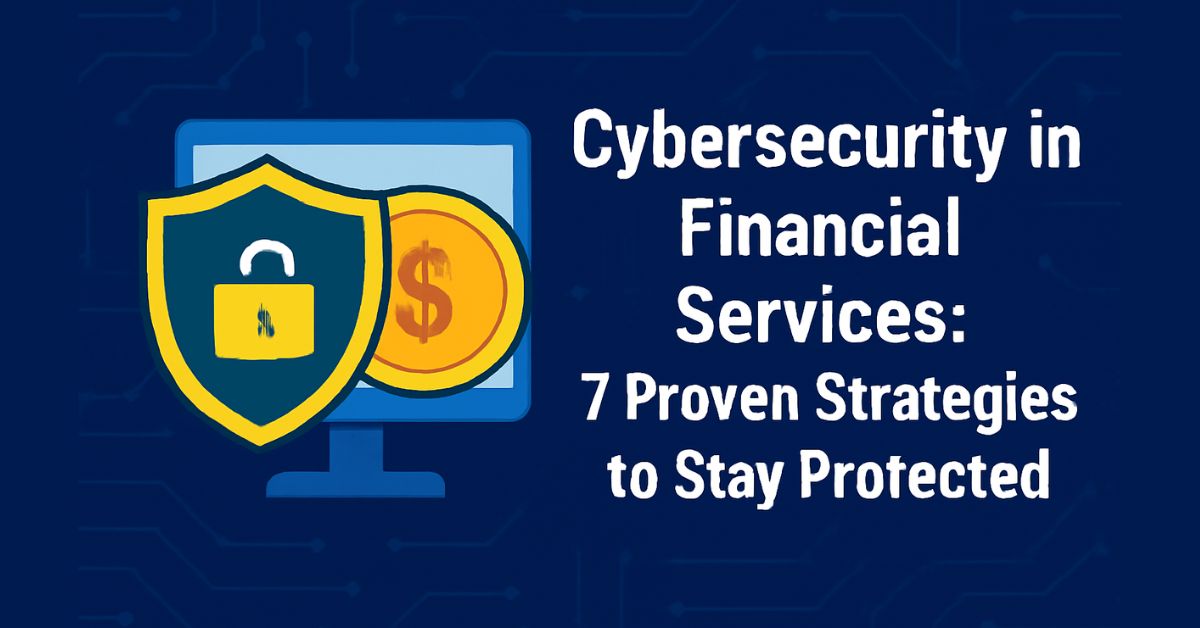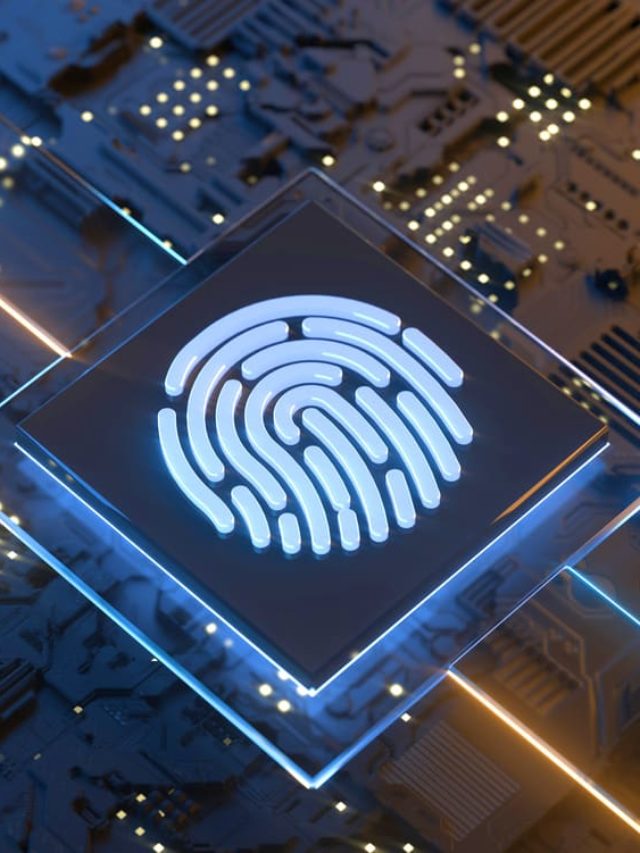Finance and technology combine with advancements in cybersecurity in financial services, meaning it is becoming increasingly essential for companies to fortify their digital defenses. Tech-savvy finance companies, insurance, and banking organizations are prone to suffering from cybersecurity breaches.
The consequences of an organization being a victim of cybercrime are grave; the monetary value is just a fraction of the data loss. Reputation, trust, revenue, and at times, the entire organization get shattered.
This article aims to explore cybersecurity in financial services by highlighting common threats and presenting eight practical, proven cybersecurity strategies. In this instance, business owners, technology professionals, or even those looking to gain knowledge regarding the subject will all find value in the information provided.
Importance of Cybersecurity in Financial Services
Like all industries, the finance sector is vulnerable to cybercrimes and therefore requires significantly more attention to fortifying its cybersecurity architecture. Banks and other financial institutions are being targeted due to the sensitive information in their possession, including names, email addresses, PHI, payment card information, and social security numbers.
An IBM report states that financial services were the second most impacted industry in global cyber breaches, next to cybersecurity, suffering an 18.9% loss. On this note, the most striking feature of the data is that the costs incurred by organizations in every breach are close to $4.8 million.
Besides these monetary losses, reputational damages may prove to be even worse. A bank that a consumer goes to should be able to protect his/her money and private information. One single event can cause massive cascading losses in customers, accompanied by legal action.
As per Cisco's 2024 Consumer Privacy Survey, 53% of consumers recognize the existence of their country’s privacy laws, indicating increased knowledge and awareness towards the protection of their data.

Common Cybersecurity Threats in Financial Services
Users get targeted with emails with links leading to fake web pages or take over phone calls impersonating banking officials to steal sensitive information. Phishing has contributed to nearly 36% of all breaches in the finance sector.
Merchandising Malware Hacking
Cybercriminals use software tools to gain insight into sensitive data, lock files, or seize control of a computer until payment is made. Insurance companies and banks have become victims of these sorts of phishing attacks every day.
Dangerous Employees in Insurance Firms
Sometimes danger comes from the inside. In this scenario, disgruntled employees retain sensitive information and either intentionally or unintentionally aid the threat.
Risks Associated With Other Companies
The dependency on other companies for a service remains popular with some institutions. Unsecured vendors pose a threat to the overall security of the network system.
DDoS Assaults

Such assaults introduce an unprecedented level of traffic to a website or server, often rendering its functionalities useless. Distributed Denial of Service attacks took aim at the online payment gateways and banking systems, causing a meteoric 65% increase in attacks.
Strengthen your Cybersecurity skills —enroll in Great Learning’s Cyber Security courses to master proven strategies against cyber threats.
8 Cybersecurity Solutions for Financial Services
We will now pivot towards the more proactive side of the discussion and highlight eight powerful solutions that can greatly enhance cybersecurity in financial services.
1. Web Application Firewalls (WAF)
Just like all firewalls, WAFs serve as a filter with specific customizable criteria that granulate the information made available to cybercriminals by a certain wealth management firm. It observes and controls the HTTP traffic made to and received from a website, filtering out any malicious attempts of intrusion such as SQL injections and cross-site scripting, amongst others.
Websites from the financial sector are always getting sensitive information and performing transactions. A WAF is sure to block any attacks from hackers attempting to take advantage of such opportunities.
Over 30% of cyberattacks are targeted towards web applications, so having a WAF is exceptionally important.
2. DDoS Protection
Both direct and indirect online banking and transacting platforms always seem to be the primary target for DDoS attacks. With DDoS protection, abnormal traffic can easily be detected early, and measures can be put in place to either block certain IP addresses or reroute the traffic altogether.
There was a particular bank in Europe that suffered a DDoS attack in 2023 that resulted in the outage of their online banking services for 12 hours. If they had implemented the appropriate mitigation tools, it would have been much less impactful. To help ensure instantaneous responsiveness and scaling in service, it is advisable to implement the cloud infrastructure with DDoS protection. Many financial institutions also rely on cloud security companies to safeguard their cloud environments from these types of large-scale attacks.
3. Prevention of Fraud
These days, identity fraud and even transaction fraud are an everyday concern for the majority of financial institutions.
Fraud detection based on machine learning and behaviour analytics can identify unusual patterns such as intensified login attempts or huge fund transfers from strange gadgets.
Fraudulent online transactions are anticipated to cost around $48 billion in 2025. For many organizations, automated alerts for fraud detection become imperative in managing the cost of fraud escalations.
4. Identity and Access Management (IAM)

IAM instruments permit and deny users access to information or technology resources by managing access to the various resources at specific times for specific purposes.
Most notable functions:
- MFA (Multi-factor Authentication)
- Access is regulated through user roles.
- Single Sign-On (SSO)
Credential compromise represents almost 60% of data breaches in 2023. IAM tools mitigate this risk level drastically.
Do not forget to perform access rights audits and delete the profiles of users who no longer should have access to the system.
5. Programs For Awareness Training And Security Risk Prevention
Cybersecurity will fail if employees rely solely on technological means and mechanisms. This is because users are the weakest link in the security perimeter. The reason is simple: a single click could potentially trigger an attack.
This is what justifies the necessity for an unending cycle of security training sessions. Certain social engineering tests, drills on handling specific incidents, and policies and procedures for password management may modify behavior to reduce the probability of errors occurring.
This group of employees who are trained and given attention generally experience 70% fewer incidents each year.
6. Monitoring Of Various Data Activities.
Participating in monitoring activities enables learning how sensitive information data is accessed, used, or shared in real time. Such activities as monitoring sensitive data access and usage can differ from less sensitive ones.
These tools are valuable in detecting potentially harmful activities, including login attempts from different locations, unlike the previously used access points, and attempts to obtain highly secured information. The details tracked include user identities, specific data files accessed, and the exact (day and time) they were accessed.
Like sensitive financial information, this kind of data needs to be watched closely all the time. This level of monitoring ensures that the requirements of GDPR, PCI DSS, and the Indian banking regulator RBI are met.
7. Data Risk Analytics

AI and machine learning technologies are used to evaluate the known risk parameters a user may pose via their data, activity, and other external threats in what is referred to as data risk analytics.
In view of such a data-driven approach, risk-prone and anomalous data assets are swiftly and accurately identified, aiding better security decisions regarding those assets.
According to a report on cybersecurity trends dated 2024, institutions that adopted the use of predictive analytics reported an increase of 34% in their breach detection speeds.
8. Cyber Insurance For Risk Mitigation
Prevention and detection are the main focuses of technical solutions, but still, no defense is 100% absolute. Cyber insurance is the main financial risk transfer mode that lessens the impact of the economic consequences of a large-scale cyber event.
Main Coverage Points:
- First-Party Costs: It takes care of the direct costs such as forensic investigation, data recovery, system repair, and business interruption losses (lost income).
- Third-Party Liability: It takes care of the expenses associated with claims or lawsuits from customers or partners, including legal defense as well as regulatory penalties.
- Incident Response: It usually gives quick access to specialized incident response teams (legal, forensic, crisis management) for fast recovery and compliance.
Getting cyber insurance means making a financial investment that will give you the power to withstand a situation where technical defenses are breached. A lot of insurers are now making it compulsory to have basic security measures in place (such as MFA and employee training) so that insurance can be granted.
Final Thoughts
Safeguarding data in the financial services sector is also an issue of safeguarding trust, reputation, and business continuity. With the rapid pace of digital transformation, institutions must prioritize cybersecurity in financial services more than ever before. The good news? Provided that the proper steps are implemented, insiders will always be able to stay ahead of attackers.
Contributed By: Ombir Sharma






